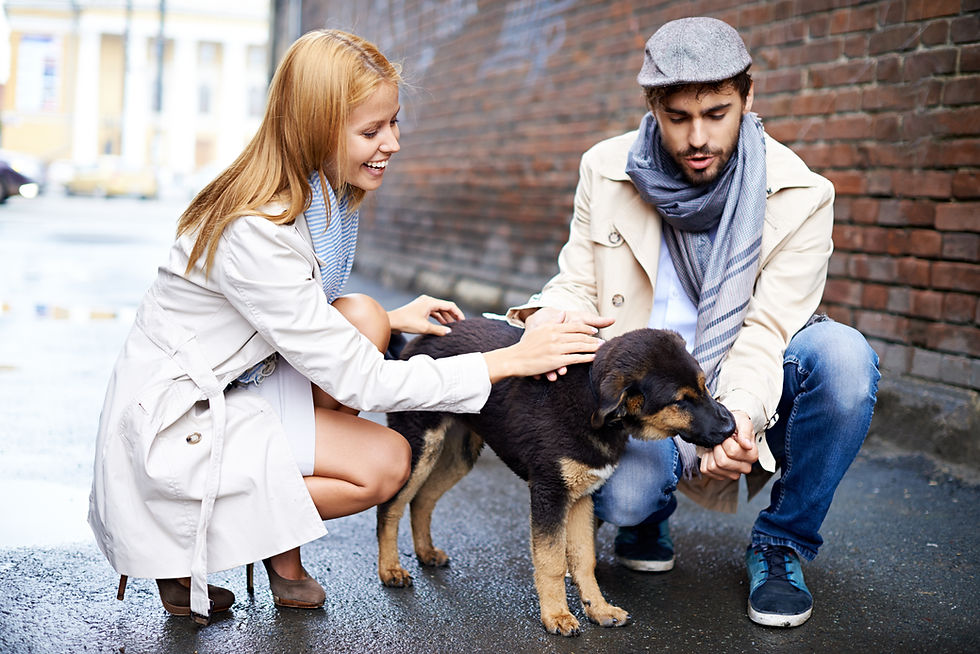How to Prevent Behavioral Issues in Rescue Dogs: A Training and Socialization Guide
- ma85023
- 3 days ago
- 3 min read

Adopting a rescue dog can be an incredibly rewarding experience, but it often comes with its own set of challenges. Many rescue dogs arrive with behavioral issues, such as anxiety, fear, or aggression, that can make adjusting to a new home more difficult. This article aims to provide dog owners with the tools and strategies necessary to prevent and address these common behavioral challenges.
Behavioral Issues in Rescue Dogs
Many rescue dogs come from difficult pasts, including shelters, neglect, or abandonment. These experiences can leave lasting emotional scars, leading to behavioral issues. Dogs may exhibit fear-based aggression, separation anxiety, or problems with leash pulling and excessive barking.
In some cases, rescue dogs may display aggressive dog behavior, such as growling, snapping, or lunging, often a result of trauma or lack of socialization. Addressing these issues early is crucial as many regions have strict liability laws that hold pet owners responsible for any injuries or damages caused by their dogs.
The longer they go uncorrected, the more likely they are to become ingrained habits. By recognizing and tackling these problems early, owners can help their rescue dogs adjust to their new homes.
Training Your Rescue Dog: A Structured Approach
Consistency is essential when training a rescue dog. Setting clear rules and routines helps your dog understand what is expected of them. Dogs thrive on structure, and consistency builds their confidence. Confusion and anxiety gets reduced with time.
Key Training Techniques:
● Positive reinforcement: Reward good behavior with treats or praise. This encourages your dog to repeat positive actions. Avoid harsh punishment, as it can increase fear and hinder progress.
● Basic commands: Teaching simple commands like "sit," "stay," and "leave it" helps establish communication and structure. This also reduces undesirable behaviors by giving your dog clear instructions.
● Crate training: Crate training provides a safe and secure space for your dog. It can reduce separation anxiety and help your dog feel more at ease when you're not around.
Training takes time, and progress may be slow at times. Be patient and celebrate small victories along the way. With consistency and positive reinforcement, your rescue dog will adjust and thrive in their new home.
Socialization: The Key to Well-Adjusted Dogs
Socialization is one of the most important aspects of training a rescue dog. Early exposure to new environments, people, and other animals is crucial in helping your dog become well-adjusted. Socialization helps prevent fear and aggression later on by allowing the dog to become familiar with different situations.
● Positive interactions: Encourage supervised positive interactions with people and other dogs. A well-socialized dog is more likely to remain calm and confident in new environments.
● Public outings: Take your dog to different places like parks and pet-friendly stores. This exposes them to various sounds, sights, and smells, which can help prevent fear-based behavior.
● Controlled playdates: Organize playdates with calm and well-behaved dogs to promote healthy socialization. This teaches proper play behavior and helps reduce anxiety around other animals.
Endnote
Adopting a rescue dog can be a rewarding experience, but it requires patience and understanding. Every dog is different, and progress may take time. By offering a stable environment and consistent training, you help set your dog up for success. If challenges arise, don’t hesitate to seek help when needed. With patience, you’ll build a strong, positive bond with your new companion.



